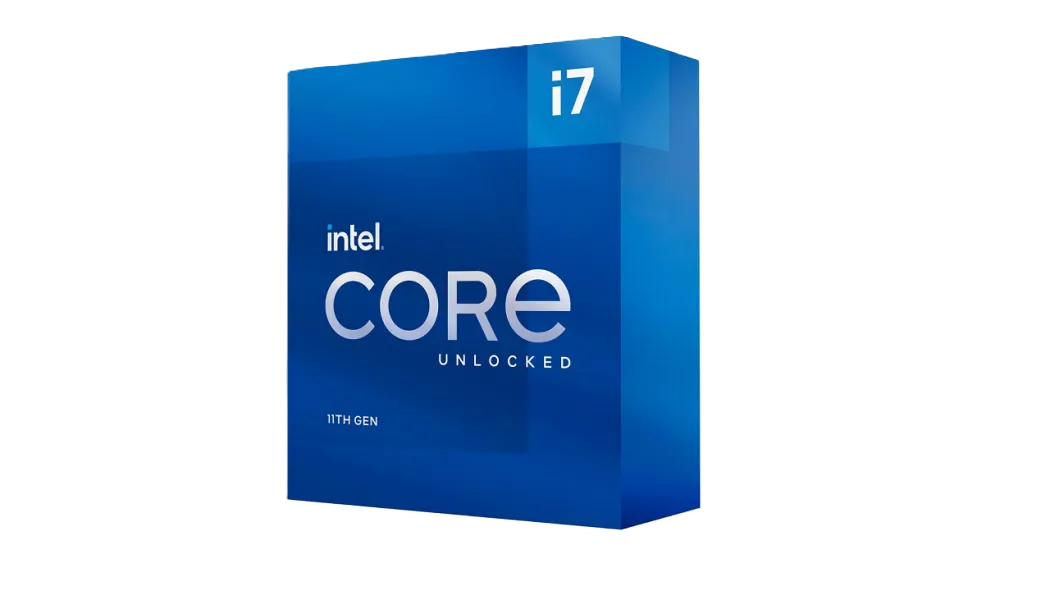
Intel
CPU
Intel Core i7-11700K
MSRP:
$228
Technical Specifications
Performance Core Clock
3.6 GHz
Performance Core Boost Clock
5.0 GHz
Base Clock
3.6 GHz
Boost Clock
5.0 GHz
L3 Cache
16
TDP
125W
Includes Cooler
No
Socket
LGA1200
Cores
8
Threads
16
Integrated Graphics
Intel UHD Graphics 750
Maximum Supported Memory
128GB DDR4-3200
ECC Support
No
SMT Support
Yes
Release Year
2021
MSRP
$228
Manufacturer
Intel
Pros & Cons
Pros
- Adequate cores for gaming and moderate multitasking
- Good for 1080p and 1440p gaming
- High boost clocks provide excellent gaming performance
- Good base clocks provide stable performance
- Reasonable power consumption for the performance level
- Unlocked multiplier allows for overclocking headroom
- DDR4 memory support offers good value and compatibility
- Integrated graphics enable system boot without dedicated GPU
- Good value proposition for the performance level
- Mainstream performance with strong price-to-performance ratio
- Ideal for gaming-focused builds with good upgrade potential
Cons
- End-of-life socket with no future upgrade options
- Higher power consumption and heat generation
- Pricing may not reflect age compared to newer alternatives
- Aging architecture may lack optimization for newest software
- Limited availability of new units, mostly second-hand market
Community Insights
- On Reddit, users frequently express that while the i7‑11700K is a solid chip, it’s less power-efficient and cost-effective than AMD’s offerings
Frequently Asked Questions
How does the Intel Core i7‑11700K compare to the Ryzen 7 5800X?
It generally trails the Ryzen 7 5800X in multi-core benchmarks like Cinebench R20/R23, often by a noticeable margin, although single-core performance can be close at times. At launch, the i7‑11700K also drew significantly more power under load—sometimes 25–27% higher—while offering similar, or slightly lower, gaming performance.
Performance Guide & Use Cases
Best For
Office workstations and light productivity applications
Multi-monitor productivity and office applications
Legacy system upgrades maintaining existing motherboard investment
Cost-effective builds using existing DDR4 memory
Performance builds with robust cooling solutions (125W TDP)
Mainstream systems with solid performance per dollar
Overclocking enthusiasts and performance tuning
Office computers and media centers without dedicated graphics needs
Potential Bottlenecks
May be limited by DDR4 memory bandwidth in memory-intensive applications
Requires adequate cooling solution to prevent thermal throttling (125W TDP)
Legacy platform may limit memory speeds and PCIe lanes (LGA1200)
Overkill Scenarios
1080p gaming with minimal background applications
Older competitive titles like CS:GO at basic settings
Basic gaming and productivity tasks
Silent computing requirements in quiet environments
Compact builds with limited airflow
Online shopping and banking applications
Avoid For
Builds prioritizing DDR5 memory and platform longevity
High-end content creation with demanding workflows
Silent computing and library/office environments
Simple plug-and-play system requirements
Professional workstations requiring cutting-edge performance
Extreme performance computing applications
Professional workstation tasks requiring maximum parallelism
Budget workstations prioritizing core count over single-thread performance
Energy-efficient home servers and NAS builds
PCHelperAI may earn a commission from purchases made through affiliate links to participating retailers on this site. This compensation does not influence the products shown, pricing, or the order in which prices appear. For more details, please see our full disclosure.